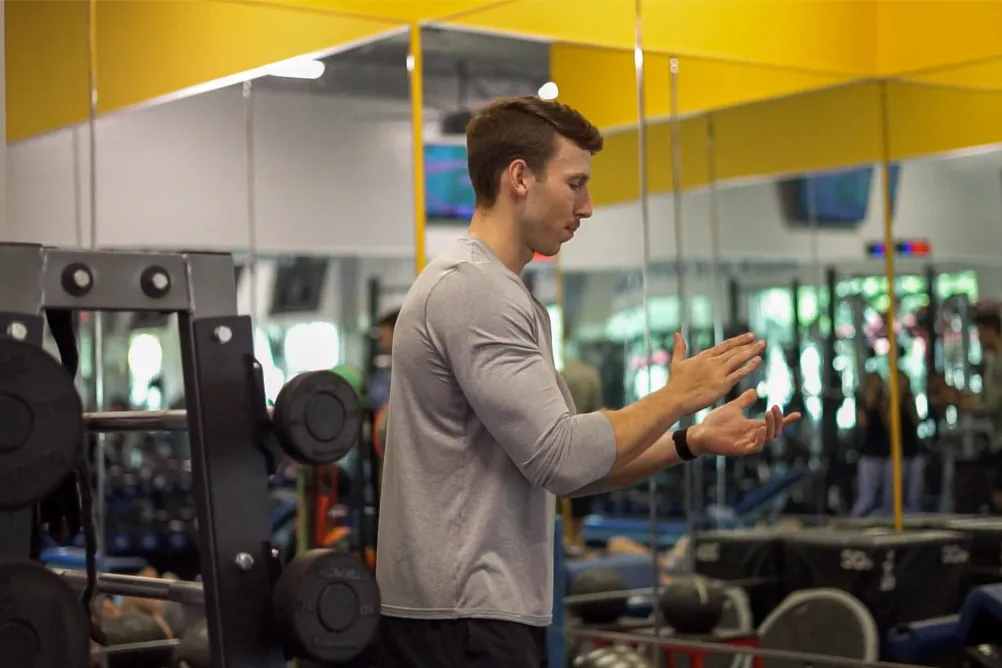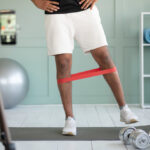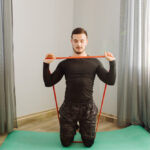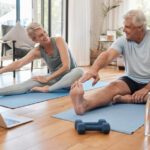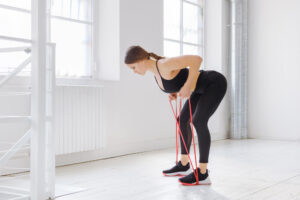You’re running through a beautiful area, your heartbeat is in sync with your pace, and you feel like you can keep going forever. That’s the power of cardiovascular endurance, and it’s not just for elite athletes – it’s achievable for everyone.
In this post, we’ll talk about cardiovascular endurance, a key to unlocking your body’s potential. We’ll guide you through its importance, and how it transforms your health. Plus, you’ll find actionable tips to start improving your cardiovascular endurance today.
What is cardiovascular endurance?
Cardiovascular endurance is about how well your heart and lungs supply your muscles with oxygen to keep you moving for an extended period. It’s running an extra mile, swimming an additional lap, or dancing a bit longer, all without overwhelming exhaustion.
This endurance is a vital element of your overall fitness. It’s the silent engine that keeps you running (literally and metaphorically), and it’s the secret sauce behind every successful athlete.
But, it’s not just for the pros. Good cardiovascular endurance benefits us all, no matter our fitness level or goals. It can keep our hearts healthy, improve our overall physical health, and even boost our mood and mental well-being.
Why should you care about your cardiovascular endurance?
Cardiovascular endurance is essential for heart health. When you regularly engage in cardiovascular exercises, your heart becomes stronger and more efficient at pumping blood throughout your body. This can help to lower your risk of heart disease and other cardiovascular conditions.
Additionally, improved cardiovascular endurance enhances your stamina, allowing you to perform daily activities more efficiently and without fatigue. Whether it’s climbing stairs, walking the dog, or doing household chores, a high level of cardiovascular fitness can make these tasks easier.
Moreover, cardiovascular endurance is a key factor in weight management. Cardiovascular exercises burn calories, helping you maintain a healthy weight or even lose weight if that’s your goal.
Benefits of improved cardiovascular endurance
Improved cardiovascular endurance can bring many benefits to the table:
- Heart health: This one’s a no-brainer. When your cardiovascular endurance is top-notch, your heart is the biggest winner. It becomes stronger, pumps blood more efficiently, and is less prone to diseases.
- Immune system boost: Cardiovascular exercise is like a power-up for your immune system. It promotes good circulation, which allows the cells and substances of the immune system to move through the body freely and do their job efficiently.
- Improved sleep quality: Here’s a fun fact – breaking a sweat during the day may help you catch quality sleep. Cardiovascular exercise, especially when done regularly, can help you fall asleep faster and deepen your sleep.
- Enhanced mental health: Cardiovascular endurance exercises are not just a workout for your body, but also for your mind. They can help reduce stress, anxiety, and depression. Plus, they boost your mood and keep those gloomy thoughts at bay.
Where to start? Measure your cardiovascular endurance
Before you start thinking about the way to boost your cardiovascular endurance, you need a starting point, a benchmark. Where are you now? How long can you run, swim, or cycle before you feel like you’re running on empty? To answer these questions, you need to measure your current cardiovascular endurance.
There are several ways to do this, but here are a few of the most common methods:
- The mile run: This is a classic. Simply time yourself running a mile. The faster you can run it, the better your cardiovascular endurance.
- The Cooper test: Invented by Dr. Kenneth Cooper, this test involves running as far as possible within 12 minutes. It’s a great way to assess your endurance level.
- The Step Test: Got a sturdy box or step? Then you can do this test. Step up and down at a steady pace for three minutes, then check your heart rate immediately after. The quicker it returns to normal, the better your cardiovascular fitness.
Remember, these tests aren’t about comparing yourself to others. It’s about knowing your abilities and tracking your progress. So, don’t be disheartened if your initial results aren’t where you want them to be. This is just your starting point. With consistent effort and the right training approach, you’ll see improvements sooner than you think.
Consultation and precautions
Before you lace up your sneakers and embark on your journey to improve your cardiovascular endurance, it’s wise to take a few precautions and maybe even have a chat with a healthcare professional. Here are a few tips:
- Consult your doctor: If you have any underlying health conditions, particularly heart or lung diseases, or if you’re over the age of 45 and have been inactive for a long time, it’s crucial to consult with your doctor before starting any new exercise program.
- Start slow: Rome wasn’t built in a day, and neither is cardiovascular endurance. It’s important to start slow and gradually increase the intensity and duration of your workouts. This approach not only helps prevent injuries but also makes the whole process more manageable and enjoyable.
- Listen to your body: This one’s non-negotiable. Always pay attention to what your body is telling you.
- Hydrate and eat right: Exercise is just one part of the equation. Proper hydration and nutrition are equally important. Ensure you’re drinking enough water before, during, and after your workouts. Also, fuel your body with a balanced diet rich in proteins, healthy fats, and complex carbs.
- Don’t forget to rest: Rest days are just as important as workout days. They allow your body to recover, repair, and strengthen itself. So, don’t skimp on those rest days!
Remember, your journey to improve cardiovascular endurance is a marathon, not a sprint. It’s not about pushing yourself to the brink of exhaustion, but about making sustainable changes that benefit your health in the long run.
Interested in achieving real results with full-body workouts?
The best ways to improve cardiovascular endurance
Consider these methods to start:
- Walking: Yes, it’s that simple. Walking is a great low-impact exercise to start building your endurance. Aim for at least 30 minutes most days of the week. As you get fitter, you can increase the pace or add in some hills to make it more challenging.
- Cycling: Another low-impact exercise, cycling works your heart without stressing your joints. You can cycle outdoors or use a stationary bike indoors. Start with a moderate pace and gradually increase your speed and duration.
- Swimming: Swimming is a full-body workout that’s easy on the joints and great for cardiovascular endurance. Start with a few laps and gradually increase your distance as your stamina improves.
- Jumping rope: Don’t underestimate this childhood favorite. Jumping rope can get your heart rate up in a hurry and is an effective way to improve cardiovascular endurance. Start with short periods and work your way up.
- Interval training: This involves alternating between high-intensity and low-intensity exercises. For example, you could jog for a minute, then walk for two minutes, and repeat. This method not only improves your endurance but also helps burn more calories.
- Join a class: Whether it’s Zumba, spin, or aerobics, group fitness classes can be a fun and effective way to build cardiovascular endurance. Plus, the social aspect can be a great motivator!
Remember, consistency is key. It’s better to do a little bit of exercise regularly than a lot all at once.
Final thoughts
Cardiovascular endurance is a critical component of our overall health and fitness. It’s about more than just being able to run a marathon or swim across a lake. It’s about having a stronger heart, a more robust immune system, better sleep, improved mental health, and the ability to enjoy a wide range of activities.
Starting your journey to improve your cardiovascular endurance might seem daunting at first, but remember, every step, every pedal, every swim stroke counts. It’s not about how fast or how far you can go right now, but about improving, bit by bit, day by day.
With the right approach, a bit of patience, and a whole lot of consistency, you’ll see improvements in your cardiovascular endurance and, more importantly, in your overall quality of life.

